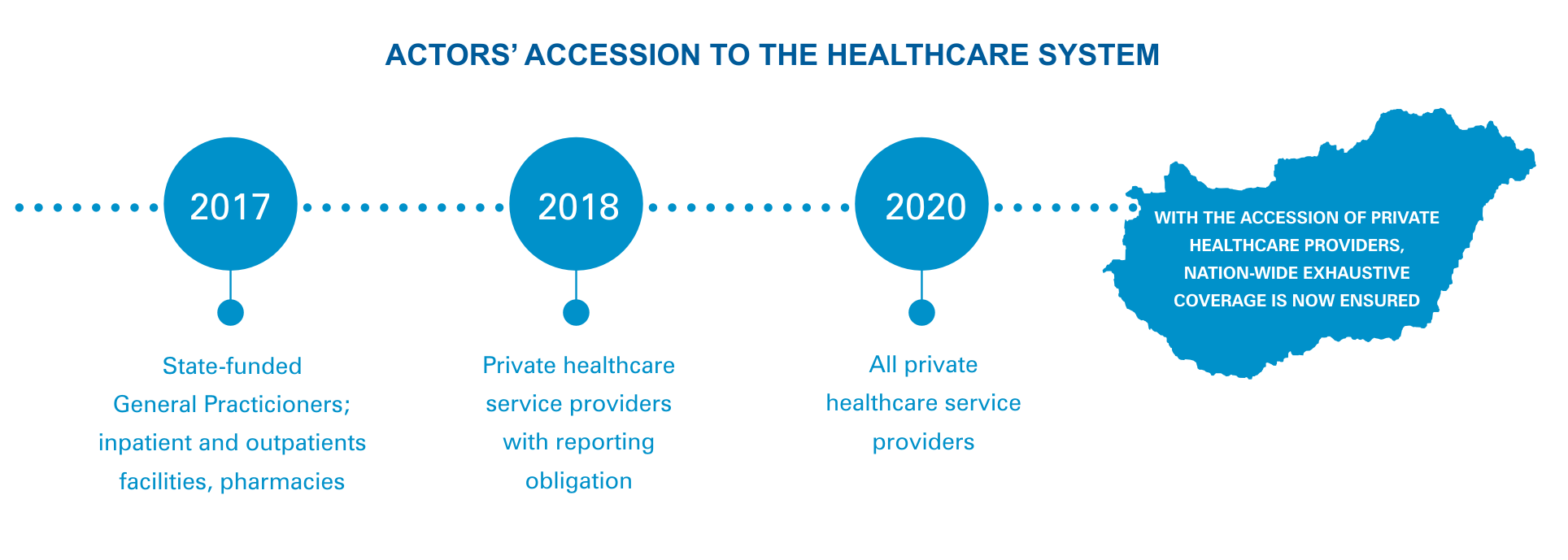
Establishing the EESZT infrastructure was a significant milestone in the history of Hungary’s e-healthcare.
The core principal of the system is to interconnect the earlier fragmented health care data systems in all of Hungary, and - taking into account foreign examples - collect all data in a central system, thus the operating services of the Infrastructure would allow the various treatment locations to access the necessary information. Another important objective was to provide modern central services such as subsystems for issuing electronic receipts, electronic referrals and medical documents, or the eProfile, which facilitate the wide-spread adoption of modern health care.
In order to ensure patient security and personalised high-quality treatments, the key actors of the healthcare system - such as the state-funded General Practitioners, inpatient and outpatients facilities and pharmacies - were the first to join the Hungarian e-Health system, back in 2017. On 1 November 2018, all those private healthcare service providers that were legally required to report in the Central Implants Register and the National Implants Register for Hip And Knee Joint Endoprosthesis Implantation had to join the system. All non-publicly funded medical and dental care providers had to complete their accession tasks by 1 January 2020 in order to begin reporting into the EESZT system from 1 June 2020.


